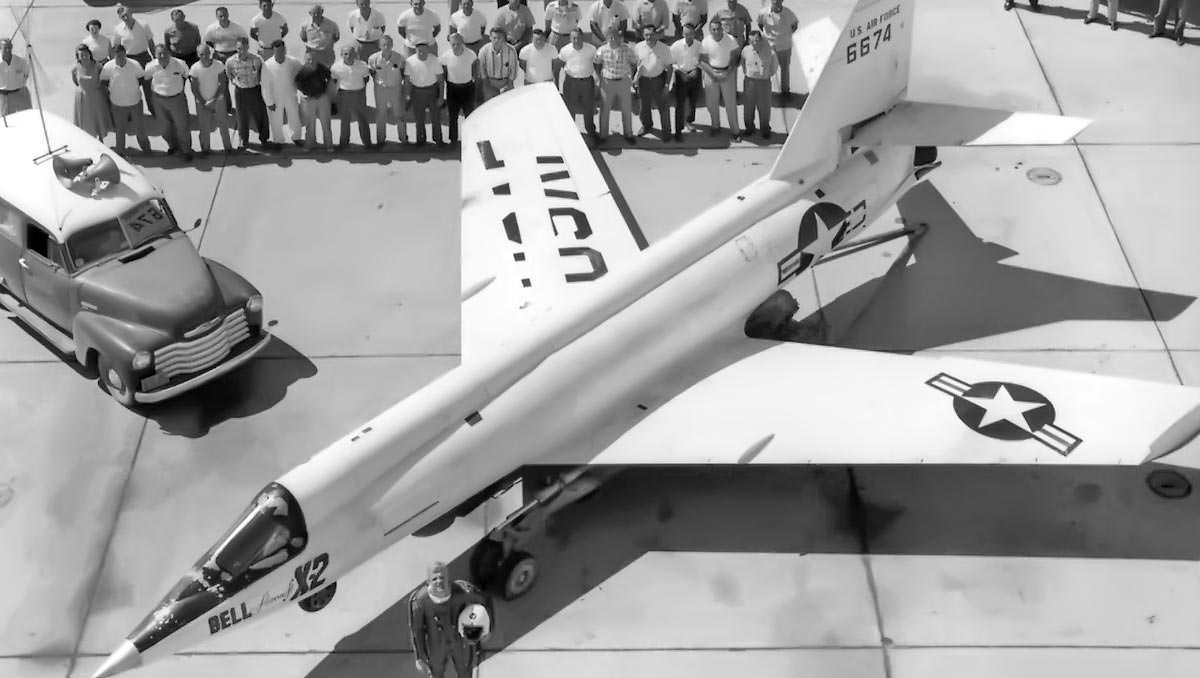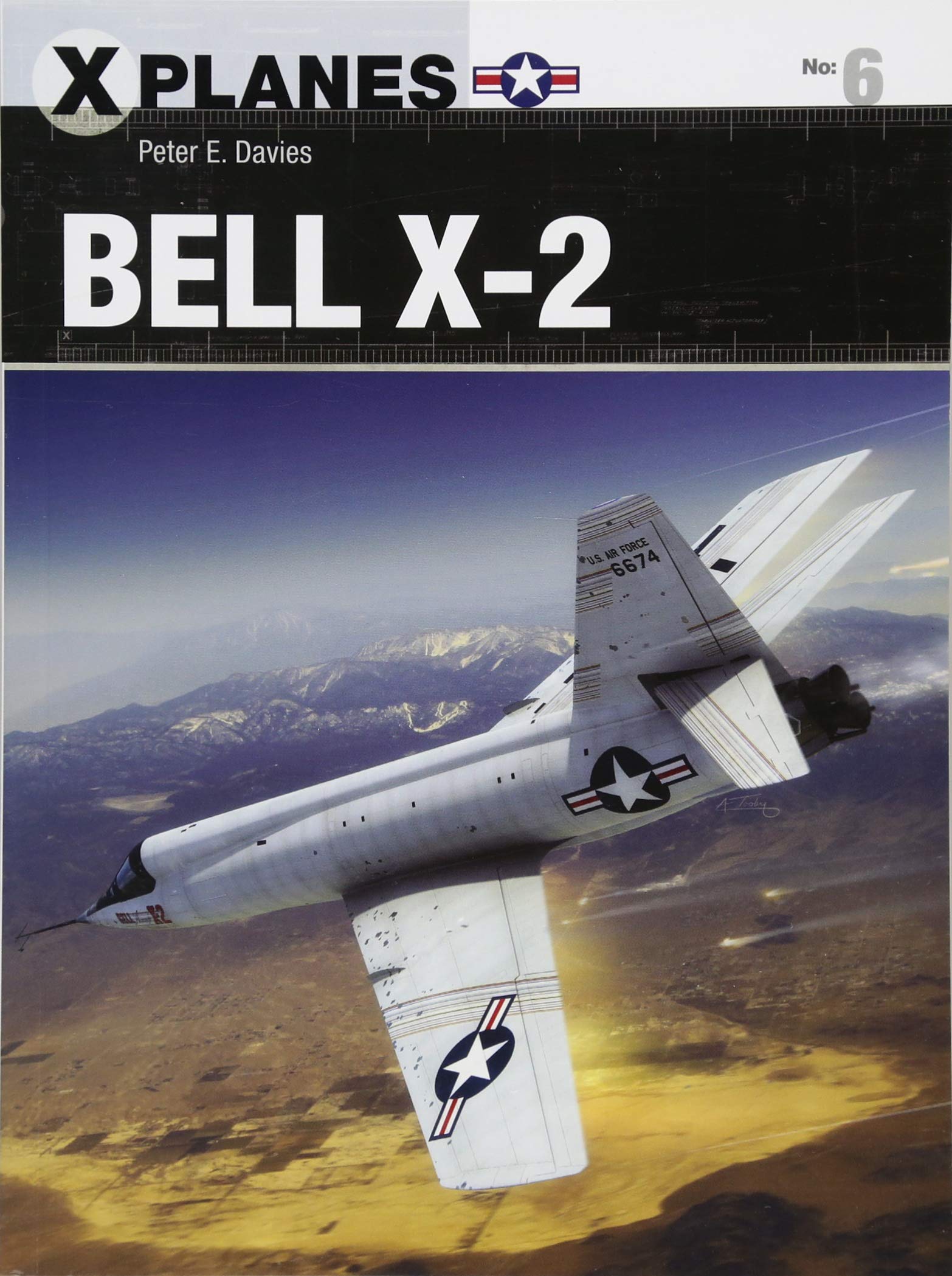X 2 Plane - Bell X-2 No. 2 with the nose after its first glide flight at Edwards Air Force Base on April 22, 1952.
) was an X-Plane research aircraft designed to test flight characteristics in the Mach 2–3 range. The X-2 is a rocket-powered, winged research aircraft developed in 1945 by Bell Aircraft Corporation, the United States Air Force, and the National Advisory Committee for Aeronautics (NACA) to study and explain the aerodynamic problems of supersonic flight. developed as the speed and altitude systems achieved by previous X-1 series reconnaissance aircraft.
X 2 Plane

The Bell X-2 was designed to provide a vehicle for studying flight characteristics at speeds and altitudes exceeding the capabilities of the Bell X-1 and D-558 II, where aerodynamic heating issues were investigated. ".
Bell X 2 Archives
The Bell X-2 had a long development period due to the necessary advances in aerodynamic design, control systems, materials that maintain adequate mechanical properties at high temperatures, and other technologies that had to be developed. Not only did the X-2 achieve human flight speeds, altitudes, and temperatures beyond any other aircraft at the time, it also introduced throttle rocket engines to American aircraft (first demonstrated on the Me 163B during World War II) and digital flight. lead simulation.
The XLR25 rocket cleaner, built by Curtis-Wright, was based on Robert Goddard's smooth variable thrust jetto cleaner in 1942 for the Navy.
Providing adequate stability and controllability for supersonic aircraft as they approached Mach 3 was one of the main challenges facing flight researchers. After all, at the speed in this area, they knew that they would encounter a "thermal barrier". Strong heating effect due to aerodynamic friction. The twin-chamber XLR25 is a 2,500 to 15,000 lb (11 to 67 kN) sea-level, stainless steel and copper-nickel alloy, K-Monal construction, and liquid propellant (alcohol and oxygen) continuously portable rocket. winged Bell X-2 for supersonic testing.
After launching from a modified B-50 bomber, Bell test pilot Gene "Skip" Ziegler completed the X-2's first unpowered glide flight on June 27, 1952 at Edwards Air Force Base. Ziegler and Aircraft #2 (46-675) were later lost in an in-flight explosion on May 12, 1953, during a captive flight to test the aircraft's liquid oxygen system.
How Scott Crossfield (and The D 558 2 X Plane) Beat Chuck Yeager And Became The First To Reach Mach 2
B-50 crewman Frank Volkow was also killed in the incident. The wreckage fell into Lake Ontario and was never found.
Lt. Col. Frank K. "Pete" completed its first powered flight on November 18, 1955 with Everest #1 (46-674). By the time of its ninth and final flight in late July 1956, the project was several years behind schedule. , but it set a new speed record of Mach 2.87 (1,900 mph, 3,050 km/h). Around this time, the YF-104A achieved speeds of Mach 2.2 or 2.3 in fighter configuration. The X-2 lived up to its promise, but not without its problems. At high speeds, the Everest reported that its flight control was somewhat effective. A high rate of blood pressure displacement with high elasticity were the main factors. Additionally, modeling and wind tunnel studies, along with its flight data, predicted that the aircraft would experience serious stability problems as it approached Mach 3.
Captain Ivy was. Kincheloe and Milburn G. "Mel" took charge of Apt "Velope Expansion" and on 7 September 1956 Kincheloe became the first pilot to climb above 100,000 ft (30,500 m). Launched the X-2 to an altitude of 126,200 feet (38,470 m). 20 days later, on the morning of September 27, the Apt was launched from a B-50 for its maiden flight on a rocket. He was told to follow the "best maximum RG flight path".
With a nozzle extension and a longer-than-normal engine run, the Apt flew an unusually precise profile; He was the first person to exceed Mach 3, reaching a speed of Mach 3.2 (2,094 mph, 3,370 km/h) at 65,500 ft (19,960 m).
Schweizer X 26 Frigate
Up to this point the flight had been uneventful, but shortly after reaching top speed, Apt attempted to bank while the aircraft was still above Mach 3 (the rear instruments indicated he was flying at low speed, or so he feared. Rogers at Dry Lake away from the safety of the landing pad).
The X-2 is out of control and struggling with three sequential clutch modes, control clutches, inertia roller clutches and supersonic spin.
Overtook Chuck Yeager in the X-1A about three years ago. Yeager was hit by the vehicle's excessive inertial forces, but recovered. Tried to recover from Apt roll but failed. The steering lock was still trying to restore spin. It only fires an ejection capsule equipped with a relatively small drogue parachute. Apt may have been disabled by significant release forces. He was killed when the capsule plunged into the desert for several minutes, failing to eject to use his personal parachute before impact.
The craft flew through several slips and stalls before landing and breaking into three pieces (separate from the capsule). A proposal to salvage the aircraft and modify it for the hypersonic test program was rejected. The ship was wrecked.
File:bell X 2 Replica.jpg
A subsequent investigation into the fatal flight of the X-2 identified several contributing factors to the crash - mainly focusing on Apt's decision to turn the plane when it was above Mach 3. Some have argued that he lacked experience with rocket ships, although historian Chris Petty has noted. , “It practically blew the complex profile almost completely, but it was the extra seconds of the XLR25 [assembly] that pushed the X-2 beyond the known speed and into the unknown stability predicted by GEDA. [Taken by Goodyear. electronic differential analyzer computer].
In short, Petty Apt has done his job too well and suggests that the AFFTC and the conflicting priorities within it may exceed Mach 3. Petty quoted Base Commander Jeral Stanley Holtoner as saying, "I think every controller under me was critical of themselves, because if we tell this guy [Apt] to stop at a certain speed, it's not going to happen."
One problem that became apparent prior to testing was that the X-2's escape mechanism was woefully inadequate. The New York Times reported on EVITE that Everest criticized the relatively new detachable capsule, saying "some safety was sacrificed to delay X-2 flight tests while the escape mechanism was modified."

Another NACA research pilot, Scott Crosfield, more accurately described it as a "suicide technique to save a life."
The Bell X 2 Starbuster
The X-2 provided valuable research data on high-speed aerodynamic heat gain and extreme altitude flight conditions (although it is unclear which of the Lockheed X-7 and IM-99 winged vehicles. comparable or high speeds of this era), a tragedy that led to the National Aeronautics and Space Administration an advisory committee completed the program before embarking on a detailed flight study. The search for answers to many high-flying mysteries had to be postponed until three years later, when North America's most advanced experimental rocket ship, the X-15, arrived.
X-plane, x plane map, x plane 11 vr, x plane 2, x plane controls, x plane, x plane store, timber x rc plane, x plane oculus quest 2, world 2 x plane, x plane software, x plane 11 scenery
0 Comments